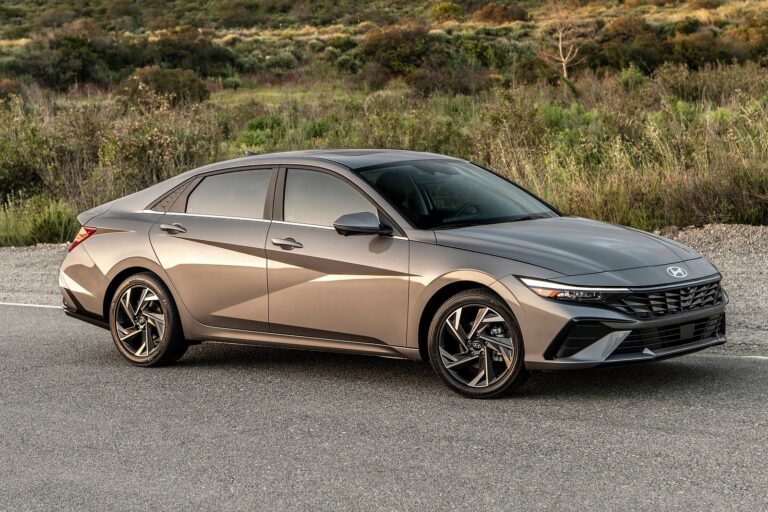The Hyundai Elantra’s interior receives several improvements for this facelifted model. In terms of materials, there are new soft-touch front door panels, new colors, and new H-Tex leather seating surfaces for the upper Limited trims. The seats inside cheaper Hyundai Elantra models are likely to retain cloth upholstery.
Hyundai has also added new technologies or improved existing ones. There is a new 4.2-inch instrument cluster design, while a 10.25-inch infotainment system is standard on SEL trims and above. Previously, this was an option on the SEL. A redesigned wireless charging pad is fitted, while three USB-C ports – one in front and two at the back – are added.
Elsewhere, the standard sound system has six speakers (up from four previously), while Limited and N-Line models now have an eight-speaker Bose sound system. Other technology enhancements include a Wi-Fi hotspot, Bluelink+ Connected Car technology, and the new Digital Key 2 that’s compatible with both Apple and Android devices.
The Elantra was already well-stocked with safety gear, but now it’s even better in this regard. For second-row passengers, side airbags are now standard, as is a rear seat belt reminder. The steering wheel with haptic feedback is standard across all trims and incorporates controls for lane-keeping assist, blind-spot collision warning, and rear cross-traffic collision-avoidance assist. On the Limited, standard items are a surround-view monitor, a blind-spot view monitor, and park distance warning (forward and reverse).
We don’t foresee any changes to the available cargo space in the Hyundai Elantra. That means you get 14.2 cubic feet of space in the trunk, nearly matching the Civic and edging the Corolla.


